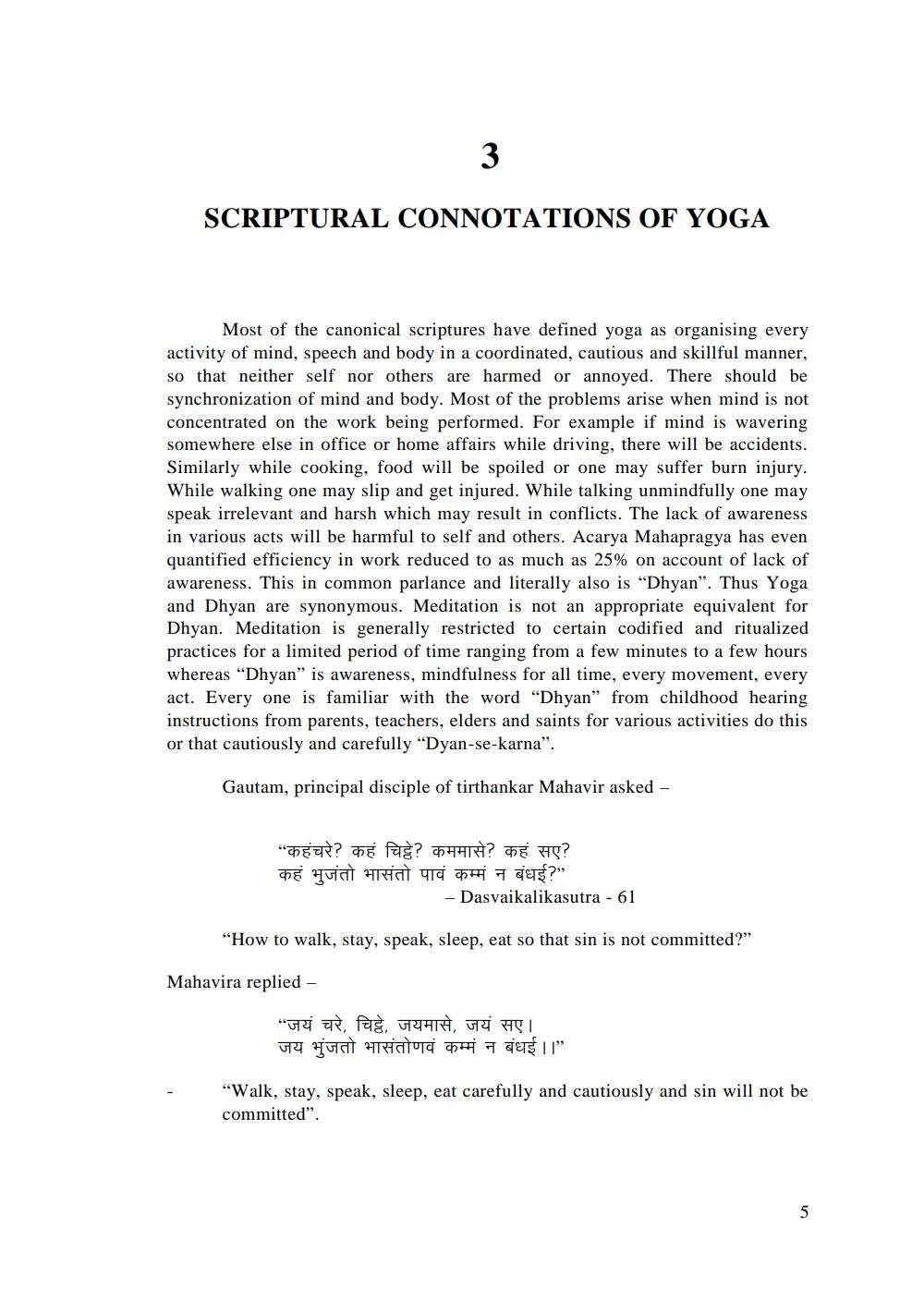________________
3
SCRIPTURAL CONNOTATIONS OF YOGA
Most of the canonical scriptures have defined yoga as organising every activity of mind, speech and body in a coordinated, cautious and skillful manner, so that neither self nor others are harmed or annoyed. There should be synchronization of mind and body. Most of the problems arise when mind is not concentrated on the work being performed. For example if mind is wavering somewhere else in office or home affairs while driving, there will be accidents. Similarly while cooking, food will be spoiled or one may suffer burn injury. While walking one may slip and get injured. While talking unmindfully one may speak irrelevant and harsh which may result in conflicts. The lack of awareness in various acts will be harmful to self and others. Acarya Mahapragya has even quantified efficiency in work reduced to as much as 25% on account of lack of awareness. This in common parlance and literally also is "Dhyan". Thus Yoga and Dhyan are synonymous. Meditation is not an appropriate equivalent for Dhyan. Meditation is generally restricted to certain codified and ritualized practices for a limited period of time ranging from a few minutes to a few hours whereas "Dhyan" is awareness, mindfulness for all time, every movement, every act. Every one is familiar with the word "Dhyan" from childhood hearing instructions from parents, teachers, elders and saints for various activities do this or that cautiously and carefully "Dyan-se-karna".
Gautam, principal disciple of tirthankar Mahavir asked -
“ कहंचरे ? कहं चिट्ठे ? कममासे? कहं सए ?
कहं भुजंतो भासतो पावं कम्मं न बंधई ?” - Dasvaikalikasutra - 61
"How to walk, stay, speak, sleep, eat so that sin is not committed?"
Mahavira replied -
"जयं घरे चिट्टे जयमासे, जयं सए । जय भुंजतो भासतोणवं कम्मं न बंधई ।। "
"Walk, stay, speak, sleep, eat carefully and cautiously and sin will not be
committed".
5




